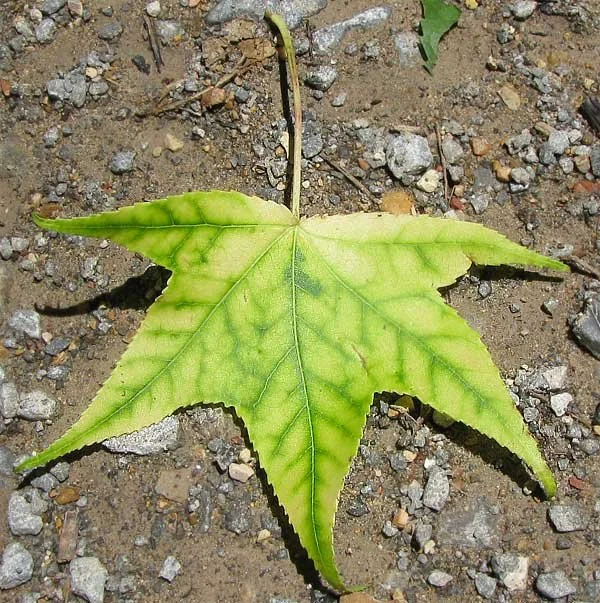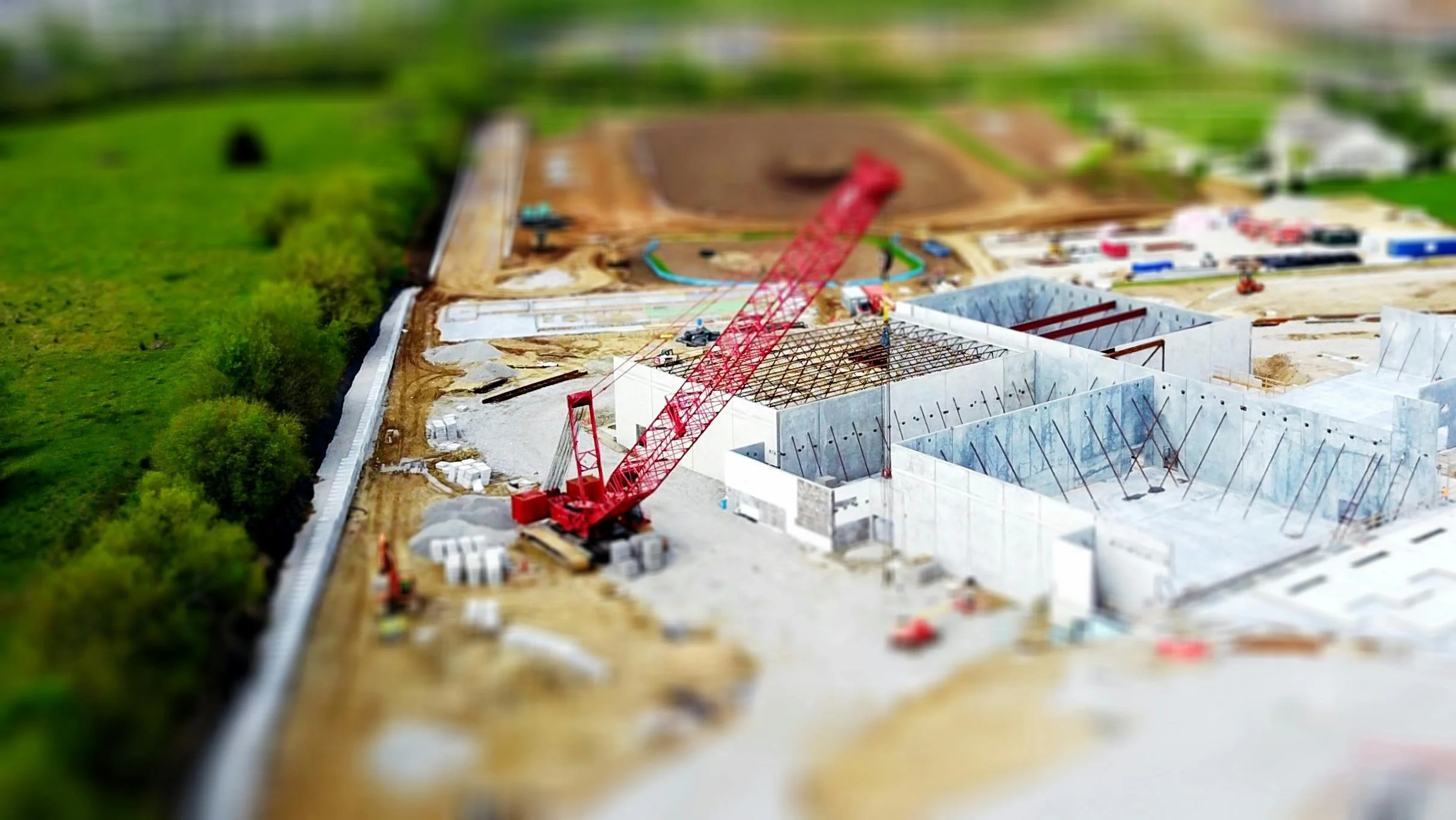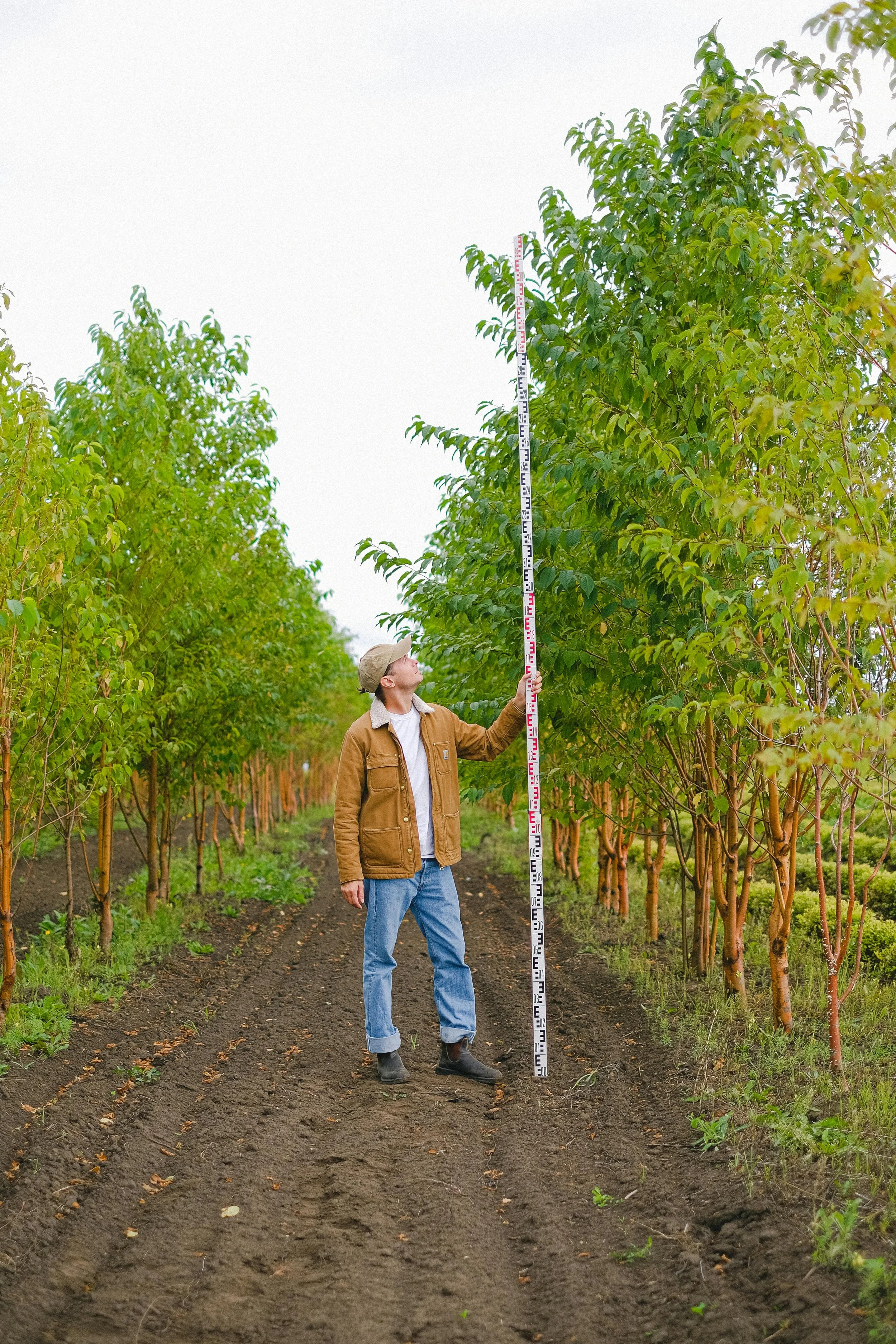Matching Trees to Site Conditions: A Key Strategy for Preventing Abiotic Stress
Sweetgum Leaf – Interveinal Chlorosis Symptom
Abiotic disorders—tree issues caused by non-living factors like poor soil, extreme temperatures, water stress, or physical damage—can lead to leaf scorch, chlorosis, dieback, or stunted growth. Unlike pest or disease problems, these disorders are often preventable. By matching trees to their sites, you can ensure healthier urban forests, a principle at the heart of professional arboriculture and guided by ANSI A300 standards.
Most abiotic issues start with the site, not the tree. Poor drainage, windy locations, or compacted urban soils can clash with a tree’s needs. Whether you’re an arborist, landscaper, or urban planner, your goal is to assess the site thoroughly and choose species that thrive under those conditions.
Assess the Site First
Every site has unique challenges. You need to evaluate soil texture, drainage, pH, compaction, sunlight patterns, wind exposure, and nearby hardscapes (e.g., sidewalks, buildings). According to ANSI A300 (Part 6)—Planting and Transplanting—conducting pre-planting inspections helps identify risks and guide species selection (https://wwv.isa-arbor.com/store/product/4645/cid/117).
For example, a compacted site with low soil oxygen will stress a shallow-rooted tree like Cercis canadensis (redbud). A more adaptable choice, like Gleditsia triacanthos var. inermis (thornless honeylocust), can better handle such conditions. Subtle factors, like heat reflected from a building’s southern face, can also dry out moisture-loving trees. Test soil and map utilities to avoid problems, as outlined in ANSI A300 (Part 2)—Soil Management.
Select Species Wisely
Once you understand the site, choose a species or cultivar that matches its conditions (e.g., microclimate: local weather patterns; root zone volume: available soil space for roots). Mismatches cause failures, such as:
Planting acid-loving trees in alkaline soils
Choosing large trees for small root zones
Using low-tolerance species on salty roads or dry slopes
ANSI A300 and ISA’s Best Management Practices—Tree Planting (2014) emphasize selecting species based on long-term compatibility with the site (https://wwv.isa-arbor.com/store/product/104). For instance, Acer rubrum (red maple) in high-pH, poorly drained soils often develops iron deficiency. Instead, Quercus macrocarpa (bur oak) tolerates varied pH and heavier soils. Balance functional goals (shade, aesthetics) with ecological fit (drought, salt tolerance) for resilient trees.
Case Studies: Success and Failure in Action
These real-world examples show how site-species matching prevents or causes abiotic stress, offering practical lessons for tree care professionals.
Failure: Bloor Street Revitalization, Toronto
In 2010–2011, 133 Platanus × acerifolia (London planetrees) were planted along Toronto’s Bloor Street. The urban site had high soil pH (~8.2), salinity from de-icing salts, and uneven sunlight (microclimate challenges). Despite the trees’ urban tolerance, these mismatches caused chlorosis and 46.6% mortality by 2015.
Stressors: Alkaline soil, salt exposure, physical damage.
Lessons: Test soil pH and salinity; choose salt-tolerant species [1].
Success: East Palo Alto Sound Wall Planting, California
In 2007, 568 trees were planted along a California highway in a drought-prone area. A thorough site assessment identified drainage and water scarcity, leading to selections like Arbutus unedo (strawberry tree) and Olea europaea(olive) for drought tolerance. Community maintenance and phased irrigation achieved 96.3% survival after six years.
Stressors: Drought, intense sunlight.
Lessons: Pick climate-adapted species; plan long-term maintenance [2].
Success: Johnson Street, Sausalito, California
In 2017, Sausalito residents replaced declining hawthorns with Prunus cerasifera 'Purple Pony Plum' in a windy, salty coastal site. Soil amendments and wind-tolerant selection led to healthy trees by 2022, enhancing safety and property values.
Stressors: Wind, salt fog, nutrient-poor soil.
Lessons: Match species to local conditions; involve communities for success [3].
Common Abiotic Disorders
| Abiotic Disorder | Typical Cause | Preventive Action |
|---|---|---|
| Leaf scorch | Wind exposure, drought, compacted soil | Choose drought-tolerant species; improve soil |
| Chlorosis | High pH limiting iron/manganese uptake | Match pH preference; amend soil if necessary |
| Girdling roots | Poor planting practices or container memory | Root wash or correct during planting |
| Salt injury | Winter deicing, roadside salt spray | Select salt-tolerant trees (e.g., Fraxinus, Ulmus) |
| Root dieback | Soil compaction, excess fill, poor drainage | Aerate soil, maintain grade, select tough species |
Table 1: Common abiotic disorders and preventive strategies for tree care professionals.
Ethics in Arboriculture
Preventing abiotic stress is an ethical duty. The ISA Code of Ethics encourages science-based decisions that prioritize tree health and public safety (https://www.isa-arbor.com/Credentials/Code-of-Ethics). By assessing sites and selecting matched species, you reduce costs, enhance urban canopy benefits, and uphold professional standards.
Pre-Planting Checklist
Use this checklist to guide your planting decisions:
Site Assessment:
Test soil for texture, drainage, pH, compaction
Document sunlight (full, partial, shade)
Assess wind and microclimate
Map hardscapes and utilities
Measure root zone volume
Plant Selection:
Choose species hardy in the climate zone
Ensure tolerance to site stressors (salt, drought)
Match mature size to space
Inspect rootball and nursery stock
Align cultivar traits with goals
Conclusion
Healthy trees start with smart choices. By carefully assessing sites and selecting species that thrive in those conditions, you prevent abiotic disorders, reduce maintenance, and build resilient urban forests. From Bloor Street’s costly failures to East Palo Alto’s thriving canopy, these principles, rooted in industry standards, ensure long-term success for trees and communities.
References
Ordóñez, C., Sabetski, V., Millward, A. A., Steenberg, J. W. N., Grant, A., & Urban, J. (2018). The influence of abiotic factors on street tree condition and mortality in a commercial-retail streetscape. Arboriculture & Urban Forestry, 44(3), 133–145. https://auf.isa-arbor.com/content/44/3/133
Canopy. (n.d.). East Palo Alto Tree Initiative. https://canopy.org/our-work/tree-planting/east-palo-alto-tree-initiative/
Sausalito Beautiful. (2017). Johnson Street tree replacement project. Sausalito Beautiful Annual Report. https://www.sausalitobeautiful.org/projects/johnson-street-tree-replacement



